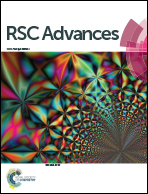Promising performance of chemically exfoliated Zr-doped MoS2 nanosheets for catalytic and antibacterial applications
Abstract
Nanostructured materials incorporated with biological reducing agents have shown significant potential for use in bactericidal applications. Such materials have also demonstrated considerable efficacy to counter effects of chemical toxicity. In this study, nanostructured molybdenum disulfide (MoS2) was doped with various concentrations (2.5, 5, 7.5, 10 wt%) of zirconium (Zr) using a hydrothermal route in order to assess its antimicrobial and catalytic potential. Doped and control samples were characterized with various techniques. X-ray diffraction (XRD) analysis confirmed the presence of the hexagonal phase of MoS2 and identification of various functional groups and characteristic peaks (Mo bonding) was carried out using FTIR spectra. Micrographs obtained from FESEM and HR-TEM showed a sheet-like surface morphology, while agglomeration of nanosheets was observed upon doping with nanoparticles. To seek further clarity regarding the layered features of S–Mo–S planes, the defect densities and electronic band structure of pure MoS2 and doped MoS2 samples were investigated through Raman analysis. Optical properties of Zr-doped MoS2 nanosheets were assessed using a UV-vis spectrophotometer and the results indicated a red-shift, i.e., movement of peaks towards longer wavelengths, of the material. Dynamics of migration and recombination of excited electron–hole pairs were investigated using PL spectroscopy, which was also used to confirm the presence of exfoliated nanosheets. In addition, the synthetic dye degradation potential of pure and doped samples was investigated in the presence of a reducing agent (NaBH4). It was noted that doped MoS2 showed superior catalytic activity compared to undoped MoS2. The nanocatalyst synthesized in this study exhibited enhanced antibacterial activity against E. coli and S. aureus at high concentrations (0.5, 1.0 mg/50 μl). The present study suggests a cost-effective and environmentally friendly material that can be used to remove toxins such as synthetic dyes and tannery pollutants from industrial wastewater.



 Please wait while we load your content...
Please wait while we load your content...